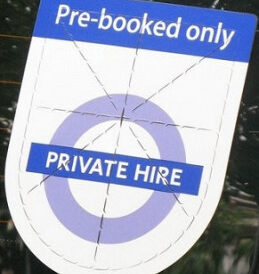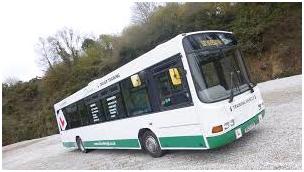National Qualification Number: 603/1159/9
Qualification Type: RQF
Guided Learning Hours: 32 (this qualification requires a minimum of 23 classroom hrs.)
Class size maximum: 12 Learners (1 Trainer)
Working as a CCTV Operator Learning Outcomes and Assessment Criteria:
This for the first unit of the CCTV Operator qualification
1. Understand the legislation as it applies to the individual in carrying out a licensable activity.
1.1.Explain the main differences between Civil and Criminal Law
1.2.State the main aims of the Private Security Industry Act 2001
1.3.Demonstrate an understanding of equality and diversity
 2. Understand the importance of safe working practices to comply with legal requirements.
2. Understand the importance of safe working practices to comply with legal requirements.
2.1.State the importance of Health and Safety in the work environment
2.2.Explain the term ‘duty of care’
2.3.Describe the responsibilities of employees, employers and the self-employed under the Health and Safety at Work legislation
2.4.State the methods of safe manual handling
2.5.Describe how to minimise risk to personal safety and security Identify typical risks and hazards (including slips, trips and falls)
2.6.Identify safety signs and signals
2.7.Explain the reporting procedures for Health and Safety accidents and incidents
2.8.Identify who to contact in first aid situations.
3. Understand fire procedures in the workplace
3.1.Describe basic fire prevention measures
3.2.List the three elements that must be present for fire to exist
3.3.Identify the classifications of fire
3.4.Describe the different types of fire extinguishers and their uses
3.5.State other types of fire fighting equipment
3.6.Explain the actions to be taken upon discovering a fire
3.7.State the importance of understanding fire control panels
3.8.Describe the importance of understanding fire evacuation procedures
3.9.Describe the role and responsibilities of a fire marshal.
4. Understand emergencies and the importance of emergency procedures
4.1.Define the term “emergency” when used in the workplace
4.2.List different types of emergencies, and the associated problems and actions that should be taken when they occur
 4.3.Explain the procedure for making emergency calls
4.3.Explain the procedure for making emergency calls
4.4.List the actions which may be taken in the event of personal injury, or a security threat
4.5.Describe behaviours that could indicate unusual or suspicious activity
4.6.Know how to identify vulnerable children or adults and the actions that should be taken
4.7.Identify potential terror threats and how to respond to suspicious activity
4.8.Identify their role in the business continuity plan after the event.
5. Understand the main characteristics of the Private Security Industry.
5.1.Define the key purpose of the private security industry
5.2.State the aims and functions of the Security Industry Authority (SIA)
5.3.Describe the required standards of behaviour of a private security operative.
5.4.Give examples of different sectors within the private security industry
5.5.State the benefits of linking in with local crime reduction initiatives.
6. Understand the importance of effective communication skills and good customer care.
6.1.Explain the basic elements of effective communication
6.2.Identify the different types of communication
6.3.State the importance of effective communication in delivering good customer care
6.4.Explain diverse customer needs and expectations
6.5.State the principles of good customer care
6.6.Describe best practice in relation to telephone and radio communications
6.7.State the use of the NATO phonic alphabet.
This for the second unit of the CCTV Operator qualification
1.Be able to identify the purpose of a CCTV system and the roles and responsibilities of members of the CCTV team within the control room
1.1 Describe the purposes of a CCTV system
1.2 Explain the roles and responsibilities of each member of the CCTV team
1.3 Identify the reporting procedures and explain the importance of the passage of accurate and timely information both up and down the reporting chain
1.4 Explain the term ‘confidentiality’ within the operator’s responsibilities.
 2.Understand the importance of codes of practice, operational procedures and guidelines in CCTV operations
2.Understand the importance of codes of practice, operational procedures and guidelines in CCTV operations
2.1 Explain why codes of practice, operational procedures and guidelines are necessary
2.2 Identify what impact these documents have on CCTV operations
2.3 Explain the value of these documents in helping to protect the CCTV system and staff from complaints and allegations of malpractice
2.4 Describe how these documents help establish clear working relationships with partners
2.5 Explain the value these documents can have in reassuring the public about CCTV operations
2.6 Explain the importance of an awareness of security, confidentiality and data protection issues when using communications and computer equipment
2.7 Explain why the control room is kept as a secure environment and the operation of access control systems
2.8 Explain the procedures for dealing with authorised visitors to the control room and the actions to be taken if unauthorised access is attempted
2.9 Explain the effective use of dedicated communication links with a third party and other staff
3. Be able to explain the different types of legislation that impacts on CCTV Operations
3.1 Explain how the Data Protection Act 1998 and the Freedom of Information Act 2000 impacts on the role of the CCTV operator
3.2 Explain how the Human Rights Act 1998 impacts on CCTV operations
3.3 Explain the main provisions of the Regulation of Investigatory Powers legislation and the Protection of Freedoms legislation and how it impacts on CCTV operations
3.4 Explain how the Police and Criminal Evidence (PACE) Act 1984 and the
Criminal Procedure Investigations Act (CPIA) 1996 impact on the collection, processing and security of evidence by a CCTV operator
3.6 Explain the requirements for an operator to produce statements and attend court as a witness
3.7 Explain the impact of the Sex Offenders Act on CCTV operations including voyeurism
3.8 Discuss privacy issues and the operators’ responsibilities.
 4. Be able to discuss and evaluate different types of incidents and how to deal with them
4. Be able to discuss and evaluate different types of incidents and how to deal with them
4.1 Define an incident in the context of CCTV operations
4.2 Describe potential local crime and disorder issues
4.3 Explain how CCTV operations interact with the police
4.4 Discuss the actions to be carried out when suspected criminal activity is detected by a CCTV operator
4.5 Discuss the actions to be carried out on receiving a request for assistance from the police and other partners
4.6 Explain how to deal with more than one incident at the same time
4.7 List examples of statutory enforcement agencies and how CCTV can assist them in their operations
4.8 Describe non-crime incidents and how the operator should deal with them
4.9 Explain the importance of accurate and detailed note taking, record keeping and creating audit trails
4.10 Explain the importance of team working and the passage of information between the team and other agencies.
5. Be able to discuss emergency procedures in the CCTV Control Room
5.1 Explain actions to be taken in the event of a terror threat to the control room
5.2 Explain how to carry out a search of the CCTV control room for suspicious objects and the actions to be taken if a suspicious object is found
5.3 Explain the actions to be carried out within the control room if an evacuation is ordered and the subsequent actions on evacuating the control room
5.4 Describe the procedures to be followed on re-occupying the CCTV control room after an evacuation
This for the third unit of the CCTV Operator qualification
1. Be able to discuss and demonstrate how a CCTV system and its equipment operates
1.1 Summarise how the components of a CCTV system works
1.2 Demonstrate how to carry out functional checks
1.3 Demonstrate the use of keypads and joysticks to operate the cameras, monitors and associated equipment
1.4 Explain the characteristics of cameras
1.5 Discuss how weather, lighting and poor positioning can affect camera images and how to overcome these problems
1.6 Demonstrate how to record images onto storage media
1.7 Demonstrate how to produce images for evidential purposes and ensure their secure management
1.8 Explain what an audit trail is and the importance of maintaining records and creating audit trails
1.9 Explain the equipment fault reporting procedures and the need for accurate records to be kept
1.10 Explain the actions to be taken in the event of a systems failure
1.11 Briefly describe current and emerging CCTV technologies
2. Be able to discuss and demonstrate surveillance techniques
2.1 Explain how to conduct surveillance planning
2.2 State how to interpret body language
2.3 Demonstrate how to give clear and accurate descriptions of people, vehicles and events
2.4 Understand the reasons and methods used when targeting suspects and vehicles
2.5 Demonstrate how to detect and track/follow a suspect on foot or in a vehicle and produce quality evidence for subsequent investigations or prosecution
2.6 Demonstrate how to deploy cameras to view a suspect entering or leaving an area
2.7 Explain how to carry out lost contact drills
2.8 Explain the basic indicators to recognise a suspected Improvised Explosive Device (IED)
2.9 Explain how CCTV can assist external agencies during a security alert
2.10 Demonstrate how to use cameras to search the outside of buildings, streets and open spaces for suspicious items and the actions to follow if found.
Assessment:
This qualification is assessed by the following means:
1. Multiple choice questions
2. Practical Assessment
Multiple choice questions are used to assess the learners underpinning knowledge. Question papers are available from the compliance department. Please read the instructions carefully.
Course Fee £295 inc VAT Per Candidate (Discount available for group bookings)




